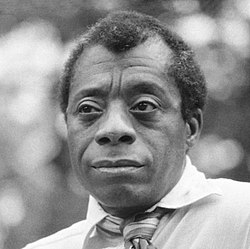
A reality check by James Baldwin: “The story of the negro in America is the story of America. It is not a pretty story.” On Tuesday evening, students had the opportunity to view Academy Award nominated film, I Am Not Your Negro, directed by Raoul Peck and voiced by actor Samuel L. Jackson.
Called a “mesmerizing cinematic experience” by the Los Angeles Times, the film is based on James Baldwin’s unfinished memoir, Remember This House. Baldwin tells his story through the lives of his friends and civil rights leaders Malcolm X, Martin Luther King Jr., and Medgar Evers.
The film is split into segments that appear like chapters from Baldwin’s manuscripts: Paying My Dues, Heroes, Witness, Purity, and I Am Not Your N*****. His writings are deeply insightful, recounting his personal experiences with racism and reality of living as a black man in America.
Baldwin recalls how Malcolm, Evers, and King Jr., were not only inspirations, but his close friends. When Evers was shot in his home, Baldwin wrote how “the blue skies seemed to descend like a blanket.” As each one of his friends are killed at the hands of racism, he can remember the events in absolute clarity.
As a documentary, the film includes sequences from various sources including institutional films, news broadcasts, and historical archives of milestones from the Civil Rights movement. It also features images from the 21st century such as scenes from protests about Michael Brown’s death in Ferguson, MO in 2014 and photographs of the unjust killing of black youths.
After the film, a panel of students led a discussion about their analyses and takeaways from the film. This was sophomore, Re’Nae Dillard’s third time seeing the film, “I was just really enraged because I’m hearing the same thing over and over again.” She appreciated how the film gives a greater look into Ever’s life. While King and Malcolm X were on two different spectrums in their approach to the Civil Rights movement, “Evers was the centerpiece that brought [them] together.” Dillard also emphasized the family aspect of the leader’s lives, giving them a greater “sense of humanity.”
Minkyo Park, sophomore, referenced another interesting side-by-side contradiction presented in the film in which happy music praising American life is played over scenes of the violent Watts riots of 1965. “I think it was reflective of the elaborate facade that is the U.S.”
“The way the documentary was structured was ingenious.” Abi Smith, sophomore, commented on the powerful juxtapositions presented in the film. She offered the example of scenes of police brutality during the Civil Rights movement compared to scenes of police brutality today, commenting on their stark similarities. For her, shifts from black and white to full color scenes from the beginning to the ending of the film represented a shift in thinking ignited by civil rights leaders. “It was so deeply impactful.”
I Am Not Your Negro breathes life into Baldwin’s life and legacy. Amidst all of inhumanity he witnessed in his lifetime, he remained optimistic for the future of race relations in the United States. “Not everything that is faced can be changed, but nothing can be changed if it is not faced.”
